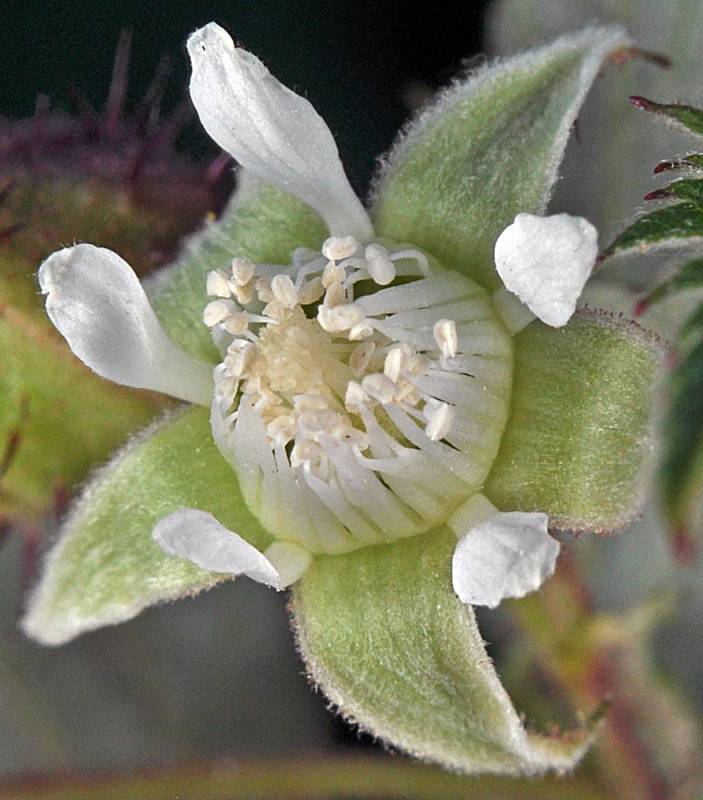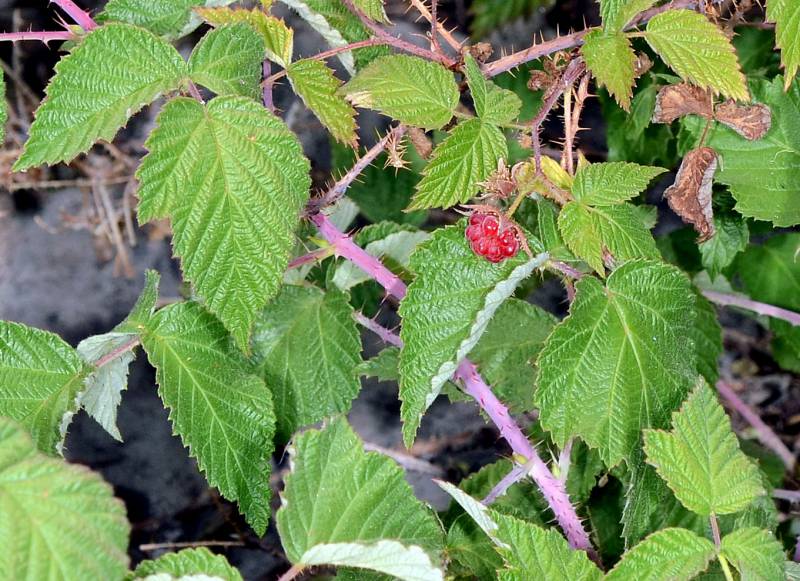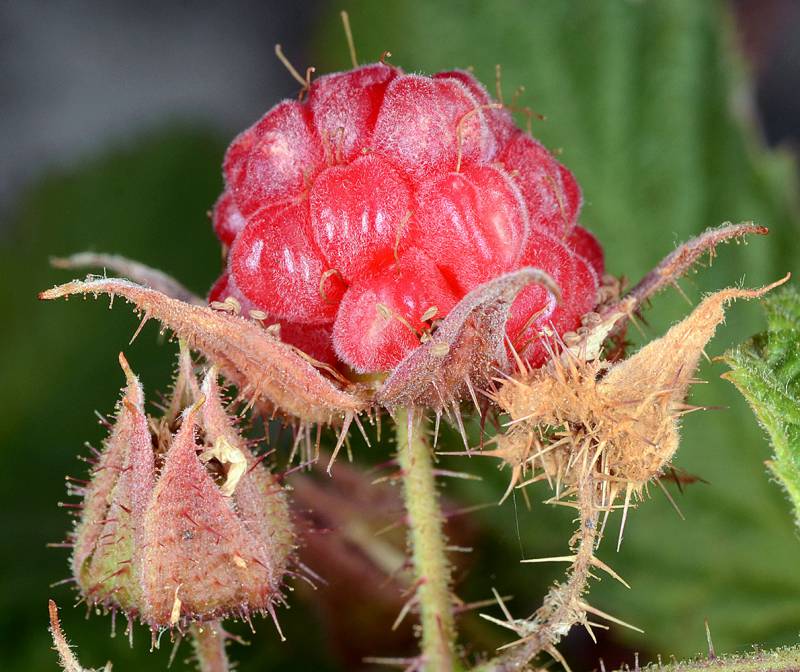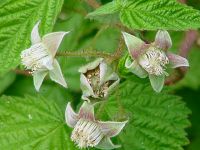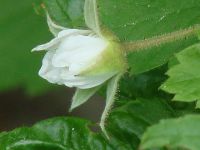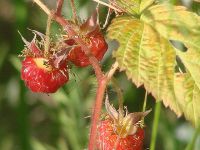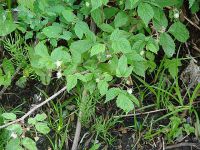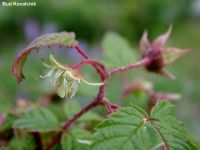Distribution: Occurring chiefly east of the Cascades crest in Washington; Alaska to California, east across most of North America to the Atlantic Coast.
Habitat: Wet or dry woodland to open and often rocky mountain slopes.
Flowers: May-July
Origin: Native
Growth Duration: Perennial
Conservation Status: Not of concern
Pollination: Apomixis, bumblebees, bees, beetles
Strong perennial 1-2 m. tall, more or less bristly and prickly, otherwise glabrous or pubescent, the bark yellow to cinnamon-brown, peeling.
Leaves alternate, usually trifoliate, the leaflets ovate-oblong to broadly lanceolate, 4-10 cm. long, irregularly biserrate, green and glabrous on the upper surface, usually gray-woolly beneath.
Flowers several, 1-4 per axil, forming a leafy, racemose inflorescence; calyx somewhat woolly to bristly-glandular, the 5 lobes reflexed, lanceolate, 4-8 mm. long; petals 5, white, ascending, narrowly oblong, 4-6 mm. long; stamens 75-100, glabrous; pistils numerous, styles slender
Drupelets weakly coherent to form a red raspberry, finely short-woolly.
Publication: Sp. Pl. 1: 492. 1753.
PNW Herbaria: Specimen records of Rubus idaeus in the Consortium of Pacific Northwest Herbaria database
WA Flora Checklist: Rubus idaeus checklist entry
OregonFlora: Rubus idaeus information
E-Flora BC: Rubus idaeus atlas page
CalPhotos: Rubus idaeus photos

